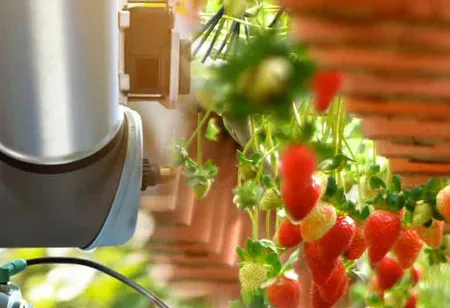Thank you for Subscribing to Agri Business Review Weekly Brief
Precision Agriculture is Better than Conventional Farming Methods: Here's How
The use of precision agriculture enables farmers to make better decisions.

By
Agri Business Review | Monday, July 03, 2023
Stay ahead of the industry with exclusive feature stories on the top companies, expert insights and the latest news delivered straight to your inbox. Subscribe today.
Sustainability is becoming essential in agriculture, and precision agriculture equipment can help farmers reach this goal.
FREMONT, CA : The use of precision agriculture enables farmers to make better decisions. It can help lower the amount of plant protection chemicals, fertilizers, and water used for irrigation. In precision agriculture, technology gets utilized to deliver to crops or livestock precisely the necessary care at any given time. It is accomplished using numerous technological platforms, including sensor technology, information and communication technology, robotization, and satellite navigation. It affects the usage of energy as well. It is suitable for the environment around them. It also lowers the costs the farmer has to pay.
The most significant distinction between conventional and precision agriculture is that the tasks that need to be completed may be calculated with high accuracy on a per-square-meter basis in the former. Precision farming provides current and future farmers, agricultural advisors, and researchers with a helpful overview of current prospects in precision agriculture techniques and present and future obstacles in this field. Because of this, farmers can maximize their production and make it more environmentally friendly. They can reduce the amount of plant protection agents, fertilizers, and water used for irrigation that they need to utilize.
Precision agriculture can get used in different ways, such as data, with models, and with tools. These parts need to have good connections with each other so the farmer can get more value from them. When people think of precision agriculture, they often only think of one of these three parts instead of putting them all together and thinking of it as a whole. Models made for precision agriculture can get used in several ways to help farmers, such as a significant cut in the use of chemicals to protect plants, fertilizers, and water for watering.
The gain may only sometimes be enough to cover the cost of buying precision agriculture equipment. When any of the substances above are used less often, the energy needed to make them decreases. Even though precision agriculture models have these perks, farmers don't always use them. Farmers get little money for using precision agriculture, so the work they have to do sometimes outweighs the benefits for them. The models are hard to understand, and the currently available technology can be used in many different ways. Farmers and startups are developing many new models, but they only sometimes work together.
Farmers can get real-time information about their fields and crops using sensors, drones, and other technologies. It lets them make better choices about how to use their resources. With technology, farmers can get the most out of their crops by looking at data about the soil, weather trends, and other things that affect crop growth. It makes it hard for farmers to figure out what's going on. It means that the yields and the return on money go up. It helps farmers use resources like water, fertilizer, and pesticides more effectively, which reduces waste and has less of an effect on the earth.
With this technology, most of the work that needs to be done by hand can be quickly done by machines. So, farmers can save money they would have spent on hiring and feeding workers. When farmers keep an eye on their crops in real time, they can find problems like pest infestations or nutrient shortages and fix them. It leads to better crop quality and more money in their pockets. Farmers can find places in their fields where erosion is likely to happen and take steps to stop it with tools like GPS and drones. Also, this technology can help farms use less water and fertilizer, and other resources that can't be replaced, making for a more sustainable future.





